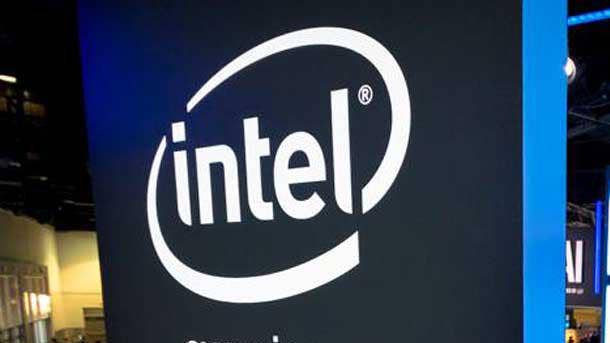Intel’s John Kalvin On How New ISV Investments Will Boost Partners
In an exclusive interview with CRN, Intel Global Channel Chief John Kalvin says the chipmaker is increasing investments to ensure a broader range of software is ready for new processors as soon as they launch to help channel partners deliver Intel-based solutions faster and with greater confidence.

Accelerating Software Readiness, ‘Dramatically’ Growing Influence With ISVs
Intel Global Channel Chief John Kalvin said the chipmaker is increasing investments to ensure a broader range of software is ready for new processors as soon as they launch in a bid to help channel partners deliver Intel-based solutions faster and with greater confidence.
In an exclusive interview for CRN’s October cover story, Kalvin said this is part of a directive from Intel CEO Pat Gelsinger to “dramatically” ramp up the number of independent software vendors who join Intel Partner Alliance, the new partner program that consolidated multiple partner programs and brought together several different types under one umbrella when it launched in January.
[Related: New Intel CTO Greg Lavender Talks ‘Developer Reboot,’ Making ‘More Sophisticated Software’]
“For Pat, he’s driving a broad recognition across Intel that if we win with software, then we’re going to make it easier for our ecosystem of partners to deliver solutions around Intel, and so he’s challenged us with, ‘Hey, grow that influence with ISVs dramatically,’” said Kalvin, whose title at Intel is vice president and general manager of global scale and partners.
Kalvin said Intel has historically delivered when it comes to ensuring software works properly on the company’s processors, but Gelsinger believes there is more work the Santa Clara, Calif.-based company can do to ensure software is ready when new silicon products are released.
“Pat wants to pull forward that readiness, so that it’s closely aligned or ‘day zero’ [with] our new products and technologies that come out [so] that the ecosystem of software is ready to take advantage of that right away,” he said.
But Kalvin said software readiness is just one part of the equation when it comes to the expanding body of work Intel is doing with ISVs. Intel is also ramping up its go-to-market efforts with ISVs, which means “co-marketing, co-selling programs and connecting them with the rest of our ecosystem of partners,” and Kalvin said his partner organization will work closely with the the newly formed Software and Advanced Technology Group led by Intel CTO Greg Lavender on both aspects.
All this work will serve to benefit Intel’s vast network of partners, which includes value-added resellers, system integrators, managed service providers and cloud service providers that fall under the Intel Partner Alliance Program, according to Kalvin.
“It gives them confidence and then [faster] time to solution, because now they don’t have to be working upstream to motivate us to go get that work done if they need some optimizations,” he said. “We’re trying to do as much of that pre-work as possible to accelerate [their solutions].”
In his interview with CRN, Kalvin talked about why Intel’s partner organization is ramping up engagement with ISVs, how Intel’s new software readiness plans different from its previous approach and how the partner organization will work with to benefit partners.

You said that Intel CEO Pat Gelsinger told you to focus more on recruiting independent software developers to the Intel Partner Alliance program. Were there any directives that came out of that?
Pat is a bold thinker, so I think he laid down for us as a partner organization some aggressive goals to dramatically increase the focus from a software partner perspective. And I think it’s one, just partner growth in the software arena. For Pat, he’s driving a broad recognition across Intel that if we win with software, then we’re going to make it easier for our ecosystem of partners to deliver solutions around Intel, and so he’s challenged like, “Hey, grow that influence with ISVs dramatically.”
But it isn’t just numbers. We want to also deliver an incredible level of value to those ISVs, and that extends on a continuum of two major buckets.
One is “get to market,” which is all the work that we need to do with ISV partners to make sure that their code is optimized to run on our latest products and technologies, whether that’s new instructions in Xeon [CPUs] or that’s Optane memory or what have you. And Pat wants to pull forward. I think you may have heard this from him, but Pat wants to pull forward that readiness, so that it’s closely aligned or “day zero” [with] our new products and technologies that come out [so] that the ecosystem of software is ready to take advantage of that right away.
So there’s a body of work around that get-to market effort. And then there’s a related body of work around how do we work with our ISVs on a go-to-market perspective, so that can be co-marketing, co-selling programs, connecting them with the rest of our ecosystem of partners, so that we facilitate the solutioning at a much faster pace.
When you’re talking about being more closely aligned with ISVs on day zero, you mean that when Intel has a new processor family being launched, you want more software optimized for those processors on the day of release or earlier, correct?
You got it. New Xeon comes out, new instructions. We want more software ready to take advantage of those as soon as possible, because that’s how you unleash the value of the innovation that we’re doing in the silicon. You have to have the software ready to take advantage of it.
Clearly, Intel was doing this work before. It’s not like you were just never making sure that the software didn’t work on the processors. So what was happening before this new directive from Pat Gelsinger? What was Intel’s approach prior to this change?
I think there’s multi-decade recognition that the software is important from a solution delivery standpoint and unleashing the value of the products that we create. But I also think it’s fair to say the level of investment or the way that we’ve approached that has evolved over time.
So Pat’s just really putting an acceleration around that body of work. And I think he calls it his 11-year vacation [away] from Intel, but work that he did at VMware [as CEO], he obviously got deep and rich in software and came back with a lot of energy and passion around making sure that we invest at an appropriate level in this particular area.

These two buckets you were talking about with respect to ISVs: software readiness and go-to-market. Is Intel Partner Alliance, the company’s new partner program, the main mechanism in which you are engaging those ISVs? Or are there multiple touch points across the company?
Obviously, it’s a big company, so there are a lot of touch points that happen across the various business units, and I think this is for Greg [Lavender’s Software and Advanced Technology Group] and our team to work across the organization and bring that into alignment.
In the prior times that we’ve talked, I’ve said it a couple of times: We want to integrate across Intel to be “one Intel” to our partners and bring the whole capability of the company into alignment and make it easier for partners to engage with us. So it’s a work in process.
[With the Intel AI Builders program], there are software partner efforts specifically around AI builders that was built up out of a business unit for all the right reasons. Really impactful program. We’re in an integration effort to bring that under Intel Partner Alliance, so the long-term vision is that that value gets delivered inside of the construct of the Intel Partner Alliance. There will always be a lot of touch points for software across the company.
How will reseller partners benefit from bringing ISVs into Intel Partner Alliance?
I think it really comes down to “time to solution” and the confidence in that solution when they deploy it. So if you put yourself in the shoes of a reseller, a [system integrator] or a solution provider, what have you, knowing that Intel and the software vendor upstream have done all of the hard work to optimize that code for the latest technologies, test, validate — all the work that we’re going to go do on the get to market side — by the time that software and those products get to them, again as closely aligned as possible when they’re coming to market, they’re going to have a lot of confidence to know that if I go deploy this combination of software and hardware into a solution for an end user, it’s going to work great. It’s going to deliver great performance, [total cost of ownership], whatever the business value proposition is that they’re trying to deliver around that. It gives them confidence and then [faster] time to solution, because now they don’t have to be working upstream to motivate us to go get that work done if they need some optimizations. We’re trying to do as much of that pre-work as possible to accelerate [their solutions].

Your focus on “software, services and solutions” for Intel’s partner organization, can you explain what’s behind that and what you’re looking to do?
This is just an evolution of what’s been happening in the ecosystem if you think about the growth of cloud over the last decade, the extraordinary level of innovation that we’ve seen [not just] at Intel but across the ecosystem. Obviously, our ecosystem does support the consumer business, but there’s a whole lot of it that’s B2B.
And in the end, the business wants to buy some sort of outcome. If it’s a school, they want to educate kids. If they’re a factory, they want to improve the quality of the products or the efficiency of their factory or manage their inventory better.
So they’re trying to buy an outcome, which means they need a technology solution and architecting that solution, given the level of innovation, there’s a lot of potential there, but there’s also a lot of complexity there. Is this going to be delivered on-prem? Is it going to be delivered in the cloud? Is it hybrid, where some elements are delivered on both? What’s the software I need? What are the technology pieces I need? The system building blocks? So I just view it as a long-term evolution of our ecosystem.
The way the specific “software, services and solutions” mantra got generated is, when I came to this chair — I started my transition in December, became full-time in January — it didn’t take very many conversations with partners to really understand these three S’s are incredible trends in the ecosystem. I started talking with the team about the rise of the three S’s across our ecosystem. Partners are migrating along this continuum, and partners are at different parts of that journey. But some of them built appliances before and are migrating. They may keep doing that, but they may be migrating to a SaaS-like software company over time. Things used to be delivered on-prem. Now it could be cloud services that are delivered. [For] these three trends, it was just recognition of what was happening in the ecosystem and finding a catchy way to talk to the team about it and really elevate the focus.
One of the things I would want to add is there’s a fourth S, kind of the original S: systems. We built this rich incredible ecosystem for getting our hardware building blocks built into all kinds of devices: notebooks, desktops, servers, storage, network gear. This is the original S of our ecosystem: getting the systems built. It isn’t like we take the focus from the systems, and we put it into software, services and solutions. So the systems ecosystem, [it’s] incredibly important [and will] continue to be important. We make the building blocks, so we need an ecosystem to build that into higher levels of integration. But then we want to add to that [with] this increased [focus] on services, software and solutions.

Can you provide any examples of how ISVs are benefiting from the work Intel’s doing?
We have a great partnership with VMware that existed while Pat [Gelsinger] was at VMware [and continues to exist]. [This involves] working with [VMware Global Channel Chief] Sandy [Hogan] and her team on how we accelerate with resellers the deployment of VMware on Intel hardware for particular applications. That’s one example.
In the data gravity, data pipeline space, obviously these are huge, growing areas. Everyone’s trying to figure out how to harness the power of their data. There’s a huge amount of work going on with ISVs in that space — names you know, names you may not know. We’re trying to make sure that we’re optimizing and doing a lot of workload placement, because a large part of what’s happening is, [ISVs] are trying to figure out, “Where do I land this specific workload in which cloud on which instance?” And Intel is the ubiquitous architecture of the cloud, and so whether you want to go to [Microsoft] Azure or you want to go to Amazon [Web Services] or you want to go to Google [Cloud] or the other many other clouds out there, there are a lot of different kinds of instances with different combinations of Intel technologies, old and new. And so we work with a lot of those data gravity ISVs to figure out where’s the optimal place to land that workload in.
And then another example I think is great is I was meeting with one of our large [global systems integrators] a few days ago, and we were talking about more of the edge-to-cloud scenario, and some work that we’re doing in quick service restaurants. And here’s a different combination of problems: They’re trying to figure out how much of the workload to deploy at the edge in the quick service restaurant, how much of the workload to put into the cloud. And the same thing applies there: Intel architecture exists in the cloud. Intel architecture, we got lots of technology to play out at the edge, and so that gives an incredible level of flexibility to write software once and then be able to decide where is the optimal place to land that. So that’s another example of the kind of work that’s going on.
I’ll tell you another one. There’s a lot of work going on with SAP Cloud migration across the ecosystem. I’ve sat in a lot of meetings with a lot of partners talking about same [issues]: Where do we land this in the cloud? Where do we land this particular workload in which cloud with which instance of Intel hardware to deliver the best outcome for the company that wants to consume that?
This new organization that Greg Lavender is heading up, the Software and Advanced Technology Group. You spoke a little earlier about the possible ways in which the partner organization and the software group is working together, and you’ve also talked about how you’re trying to break down barriers across the company to better help Intel’s partners. Have there been any conversations yet on how the partner organization is going to work with the Software and Advanced Technology Group?
Absolutely. And let me just first add that Greg’s a great addition to the Intel leadership team. He brings a level of depth of expertise in technology broadly, especially in the software space, so I’m excited to see what he’ll do over the coming years. It’s only been a couple of months as he stands up his organization and starts to unify [the company’s software efforts] across Intel, so I’m excited about that.
But yeah, I’m engaged with Greg and Greg’s staff to really start to understand how we can bring more value to our partners. It extends across the same thing I talked about earlier, which is how do we bring the work that they’re doing, support the tools that they’re developing or that we have today — access to dev clouds — bring that to the get to market” and then, again, put that together with the go-to-market, so it’s still early. But I think having a unified organization that exists, especially under Greg’s leadership — he’s got a really talented staff who can look across the whole of Intel — it gives our team a focal point to go engage with, so that we can try to do that integration and make it a bit easier for our partners.